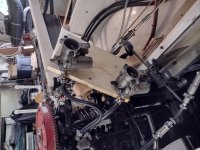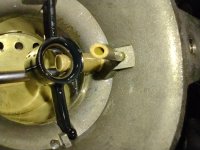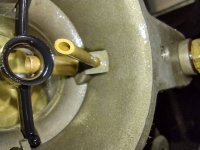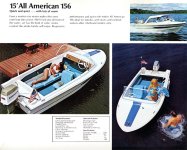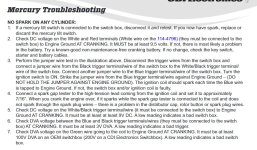After a few days, here's an update. Two days ago, I borrowed a compression gauge from the local auto supply and checked compression. #1 70, #2 72, #3, 70. I found the results unusual since I recall checking the compression just prior to starting down this road and it was, as I recall, about 120psi. A few days ago, I bought a new compression test gauge. It arrived today. I didn't want to report the low psi until I gave it a second test with the new gauge although a nice even psi was nice to see. Anyway, today's test results were #1 120, #2 125, #3 120... much better. Seems no issue with that troublesome #1 cylinder.
I was going to visit my daughter in Seattle tomorrow but they have Covid in their home as of this morning. So, I'm not going...more time to put into this engine.
Tomorrow I will check for spark at each plug back to the CDI unit. Since nothing has been changed in the ignition circuitry, I am confident the CDI is working properly. But, I will test the voltage at the coil and that the CDI unit performs according to the testing specs. As a reminder, I have the CDI brand CDI box.
I did put in new floats last week and tried to start but no dice.
When I rebuilt the carbs, I didn't remove the old welch plugs and clean out the ports behind the welch plugs. Now I'm thinking that was an error.
So, if I have spark at each cylinder and the engine doesn't start, I supose I will need to clean out what's behind the welch plugs.
I also noticed a very slow fuel drip from the brass plug at the bottom of one carb.
Here are my questions for you experienced guys:
Is my plan as described above sound?
Should I expect no leakage at all from the carbs or is a drip here and there typical?
I have an appt with a local marine engine mechanic on July 6th. Other than the above steps, what can I do prior to bringing it into the mechanic?
Here are photos of the plugs. They appear normal to me. Any other thoughts would be appreciated.
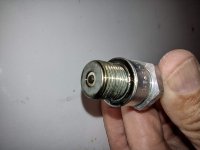
plug #1
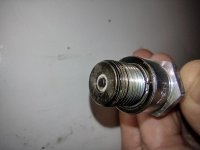
plug #2
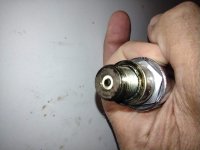
plug #3


